Tackling the causes of air pollution has been on of the themes of our special focus this week, The Air We Breathe.
But in the short term, what about the symptoms? We examined some of the most common solutions to see if the claims they make are anything more than hot air.
Face masks
Despite looking deeply dystopian, surgeons’ masks are an increasingly common sight in cities around the world – and largely pointless, according to Prof Ally Lewis, director of the UK’s National Centre for Atmospheric Science. “Surgical masks are pretty useless because air just leaks in around the side,” Lewis says.
As for more sophisticated anti-pollution masks? “Others are designed to be far more airtight and do remove particles, but don’t remove gases. Nitrogen dioxide can pass right through.” What’s more, if the seal is good enough to keep small particles from leaking in, it may also require uncomfortable amounts of energy to suck air through the mask.
“You can conceive of extremely elaborate devices that are closer to chemical-weapons gas masks,” says Lewis, “which would filter out gases and particles – it just depends what you’re prepared to do.” His hunch is that you’d make more of an impact by changing your commuting pattern to avoid busy roads at peak times.
The humble extractor fan
Cooking can cause massive spikes in indoor air pollution, so “extractor fans are a very good idea,” says Rob MacKenzie, professor of atmospheric science at University of Birmingham, “as long as they’re venting outside – and especially if you have a gas hob, because flames produce nitrogen dioxide.”
Personal air purifiers
These come in all sizes – from take-out coffee cup to big industrial-looking drums. “If you run a big blower with a fine particle filter on it,” says Lewis, “as long as your house isn’t too leaky, it will make a meaningful difference to the particle numbers. The question regarding these products is: is the volume of air it’s filtering significant relative to the volume of the house?”
A home might cover hundreds of cubic metres, and in most houses the air is completely renewed every hour. “If your unit is the size of a drinks can,” asks Lewis, “does it seem reasonable that it is going to make its way through tonnes of air?”
A frequent complaint about the plug-in machines – which have become common domestic appliances in China – is their size. “It’s like having a rattling old air-conditioner,” says Lewis “it takes a lot of energy.”
Mark Jacobson, director of civil and environmental engineering at Stanford University, has an even more fundamental problem with the growing adoption of personal purifiers. “They are a short-term way for people to save their lungs but they do not solve air pollution problems – which also harm animals, agriculture and structures. People should not have to breathe through an air filter their entire life.”
In-car filter systems
Consumers can’t know how effectively their car filters the air they breathe. “Cars are small, sealed boxes,” says Lewis, “but they are driven in the most polluted place there is: the middle of the road. Their filters have a tough job.”
As well as most particulates, filters in modern cars should catch noxious gases such as nitrogen dioxide with charcoal. But performance will vary and filters become less effective with use – so they need replacing around every six months.
Filters should also work more efficiently, says MacKenzie, “if you limit the air exchange between inside and outside, by switching to recirculation rather than continual fresh air. It’s somewhat morally bankrupt, though, to be sitting in your luxury 4X4 with pristine air, churning out god knows what from your exhaust.”
Bus shelter pollution zappers
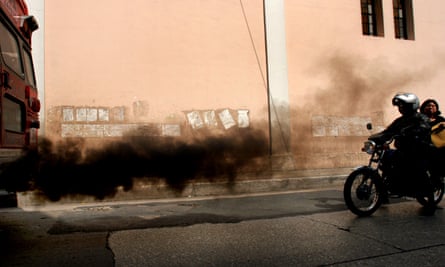
Air-purifying bus shelters and street furniture are being developed, some using filters and others with added oxidation, which turns gases into dust. It sounds like a good idea, but, says Lewis, “you’ve got to think about how big the atmosphere is over a city. Hundreds and hundreds of square kilometres, possibly 2km deep, so you’ve got a massive swimming pool of pollution.”
Unless the bus stop is enclosed, like a mini-waiting room, he says, “the mixing of the atmosphere will completely outweigh the benefits you might get from blowing a bit of filtered air around.”
Underground train networks face a similar issue: “It isn’t a sealed box that you can clean up. Every time a train goes through, it’s like a piston replenishing the polluted air. You’d need machines to move thousands, maybe hundreds of thousands of tonnes of air per hour.”
Clean buildings
Lewis sees more gains to be had by cleaning the air in offices and other workplaces than on the streets. “A modern office building is already very air-tight for energy efficiency,” says Lewis, “so you have the opportunity to filter the air because you’re not replenishing it with polluted air from outside.”
More trees

“In terms of air pollution mortality and morbidity, planting trees doesn’t help very much at all,” says Jacobson. “Planting is more useful for absorbing carbon dioxide, which affects pollution indirectly through temperatures but not directly as a chemical air pollutant.” (There are, of course, many other environmental, economic and health benefits to trees – although recent guidance from National Institute for Health and Care Excellence (Nice) warned that their leaves and branches slow air currents, causing pollutants to settle, and they may also act as sinks for particulates and chemicals.)
Then again, perhaps we just haven’t been doing it right? While bunging more trees along London’s Oxford Street probably won’t touch the sides, the more leaves there are, the more fine particulates (PM10s and PM2.5s), nitrogen dioxide and carbon dioxide will be removed from the air. “You’d need two man-made filters to achieve the same effect, which would increase the energy burden,” says MacKenzie, who has a particular interest in how plants affect air.
“The most useful places to put lots of vegetation are pedestrianised areas,” he explains, “because there’s nothing there to make the air dirtier. Trees offer the advantage of closing off the area from polluted air above. And tall trees are helpful near motorways because they produce turbulence that helps traffic pollution disperse.”
Green walls
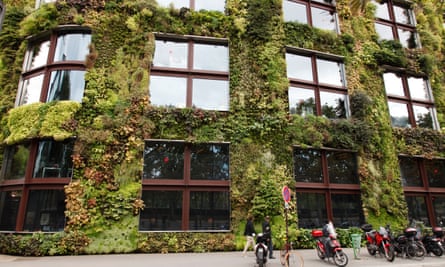
For heavily trafficked streets, says MacKenzie, “green walls would appear, in theory, to be a better option than trees” – since the plants up the side of a building can do their job without risk of trapping pollution at street level. Their success, however, will depend on many factors.
“Green walls could help with pollution hotspots, but not with every hotspot – you have to do careful calculations,” MacKenzie explains. “It would require a lot of green vegetation, a lot of maintenance and careful, heavy implementing. So it might be an expensive solution.”
Domestic air quality monitors
Lewis co-authored an article in the scientific journal Nature last year, warning about the proliferation of unregulated, affordable air quality sensors. “Smart” sensors now even come with apps offering breakdowns of CO2, particulates and volatile organic compounds.
“There is a significant challenge in making a decent measurement of air pollution with a cheap device,” Lewis says. “The sensors may be unreliable and they are marketed at the general public, who have no way of knowing whether they’re working or not.”
By contrast, he points out, air pollution monitoring equipment used by government organisations such as Defra, or academic researchers “typically costs tens of thousands of pounds. If we had a cheap way of doing it, we’d do it the cheap way.”
Lewis advises against making health decisions based upon personal monitor readings. The most accurate guide to air quality in your home is to keep track of your local outdoor readings and to keep a close eye on possible internal sources of pollution. “If you’re constantly frying in a wok or have an open fire, you will be making additional sources [of air pollution]. It’s not rocket science, and you probably don’t need a sensor to tell you that.”
Responsible burning

MacKenzie says he finds it bizarre that, for fans of domestic open fires, “the smell is part of the attraction, when that’s telling you it’s a source of pollution”.
If your carbon monoxide alarm goes off when you have a fire, you should assume there are other, significant pollutants in the room’s air. “However, the threshold on an alarm is set quite high,” MacKenzie warns, “because it’s about whether you’re going to fall asleep and never wake up again. If it doesn’t go off, you might still have concentrations of carbon monoxide and other particles in your house.”
Good ventilation, dry fuel and high temperatures are essential for clean burning, while swept and lined chimneys provide further protection. Even with so-called smokeless fuel, you need to take care. “I’d estimate that smokeless coal produces more nitrogen oxides than wood fuel,” MacKenzie says, “and they both produce the very small particles that are the least noticeable, but the most harmful, of the smoke particles.”
Guardian Cities is dedicating a week to investigating one of the worst preventable causes of death around the world: air pollution. Explore our coverage at The Air We Breathe and follow Guardian Cities on Twitter and Facebook to join the discussion
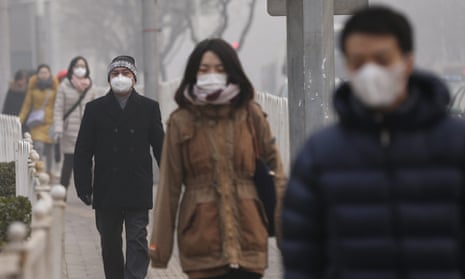



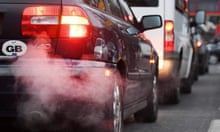

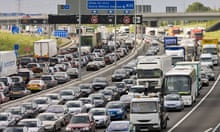

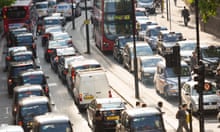

Comments (…)
Sign in or create your Guardian account to join the discussion